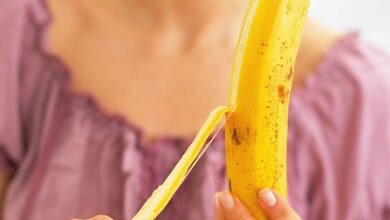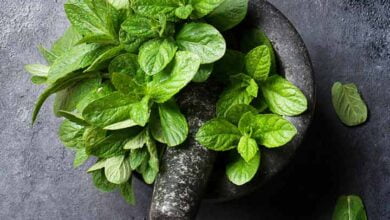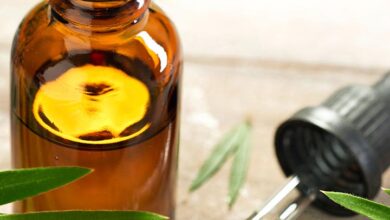Is using ice on pimples and zits effective?
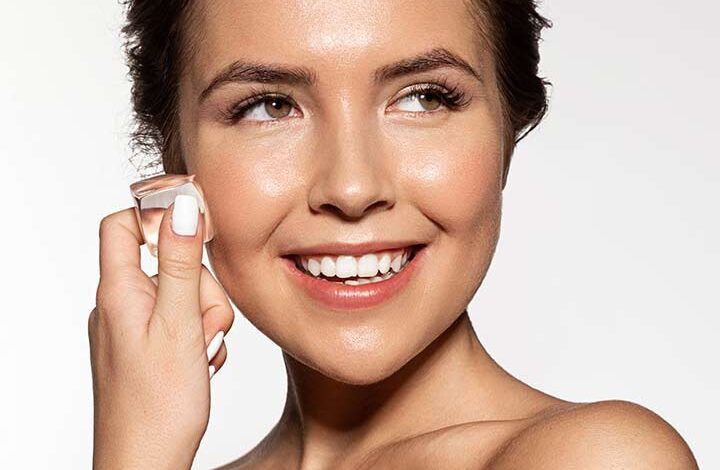
There are no one-day options for zits. If you struggle with painful and angry breakouts, applying ice to pimples can help soothe inflammation and manage pain.
Ice can’t cure zits and pimples, but does ice help with zits? However, it is an effective remedy that provides temporary relief and can help you manage pimples in a number of ways. Before you reach for the ice, read this article to understand how ice can help zits, how to use it properly, and what precautions you should take. Scroll down.

Ice for zits: does an ice cube help against zits and pimples?
The use of cold treatments to cure zits is not new. This idea was first conceived in 1925 by Giraudeau. He proposed using acetone, carbon dioxide snow, and sulfur to treat zits (1). An English physician, James Arnott, advocated the use of cold treatments to relieve zits (2). Ice therapy has incredible benefits for zits – and these are discussed below:
1. It reduces swelling and inflammation
Sounds promising. Redness and swelling can be an absolute nightmare if you’re dealing with cystic zits i A severe form of zits that occurs when pus-filled cysts form deep under the skin. These cysts can be large and painful. . When you apply ice to the zit or pimple, it constricts blood vessels and reduces inflammation. Ice has a numbing effect on your skin and slows down blood flow. This gives you instant relief.
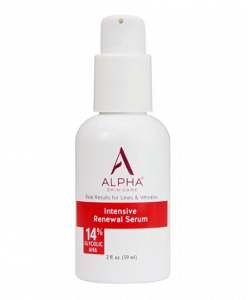
 Quick tip
Quick tipIf you experience redness or dryness after using ice on your zits, apply some olive oil or aloe vera gel to the affected area for a soothing effect.
2. It helps shrink pores
One of the main causes of zits is the clogging of the pores due to the buildup of dirt and dead skin cells. Further bacterial invasion causes zits in those areas. Ice packs help to tighten the skin pores so that bacteria and other irritants cannot clog them.
Applying ice on your zits is one of the most amazing home remedies that can only help if it is a case of inflammatory zits. This means that you will get relief if you apply ice on your zits papules i Small, raised bumps less than 1 cm in size where there is no pus due to excess oil and dead skin cells clogging the pore. cysts, nodules and pustules i Small, inflamed, blister-like sores on the skin, filled with white or yellow pus. They can occur anywhere on the body. .
Ice doesn’t work on non-inflammatory zits. In other words, it won’t work on your blackheads and whiteheads.
Before you put ice on your face, it is important to learn how to use it properly. Ice can burn your skin and make the irritation worse if not applied correctly.

How to Apply Ice to Pimples or Zits for Fast Relief
Avoid applying ice directly to your face. Here are a few ways you can follow for safe application:
1. Make an ice pack
Wrap the ice cubes in a towel or put them in a sandwich bag (if you have one). You can also use a cotton cloth to wrap a single cube. Rub it over the affected area for about 10 minutes. Take a break for 3-4 minutes and then reapply. Make sure you never use ice on your skin for more than 20 minutes.
Asha, a blogger, shared her successful experience with the ice cube remedy for zits. She emphasized, “Yes, I have been using this technique for a while now and I have noticed a change after every use, especially the morning after (i).” She described the technique by outlining a simple process of rubbing an ice cube on her face in circular motions, focusing on potential pimples. She recommended the method for people with zits, emphasizing its wallet-friendly nature and the lack of reported side effects.
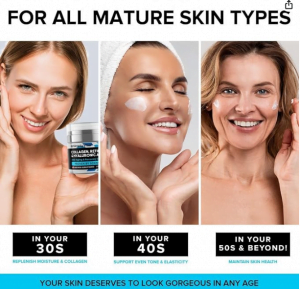
2. Add ice or cold water to your skin care routine
If your zits are delicate, you can skip the ice cubes. Using cold water on your face can have similar effects. Splash cold water on your face in the morning and evening. A mild cleanser is enough to keep your skin clean.
However, you can always use ice packs for mild zits. Apply a cold compress to your skin for 5 minutes before going to the mattress.
3. Make an infusion
You can mix water, a few drops of lemon juice and a few drops of tomato juice and then freeze it. Rub the ice cubes over the affected area.
However, keep in mind that dermatologists advise you to avoid lemon juice if you have sensitive or extremely dry skin, as it is very acidic and can be harmful to your skin.
You can also brew some tea (use green tea or chamomile tea) and then freeze it. Rub the frozen tea cubes over your face.
 Quick tip
Quick tipYou can add a few pieces of fresh fruit to the water before placing the ice cube tray in the freezer. Use these fruity ice cubes on your pimples for extra nourishment.
4. Immerse your face in ice water
Take cold water in a bowl. Add ice cubes to it. You can even add lemon and cucumber slices to the water. Immerse your face in the water for a few seconds. Repeat the process for 2 or three minutes.
Rubbing ice on zits or pimples seems like a simple way to treat them. However, this approach is not without side effects. Read more in the next section.

Disadvantages of Rubbing Ice on the Face
Applying ice to your skin can temporarily slow down blood flow. While this may have short-term benefits, it does not help in the long run and does not improve your overall skin health. Applying ice to your face too often can cause headaches because it exposes your skin to sudden temperature changes that damage your capillaries.
People with sensitive skin should also refrain from rubbing ice on their face, as this can cause irritation and make the skin even more sensitive.
It is essential that you take these possible side effects into account. And more importantly, you should also take certain precautions. Read more in the next section.
Things to Know Before Applying Ice to Pimples or Zits
- Applying ice to zits can bring pus to the surface. Although it may be tempting to squeeze it, avoid doing so as squeezing zits or pimples can worsen the inflammation and may even cause scarring.
- Be careful with ice. If you hold it on your skin for too long, it can give you frostbite i A condition in which the skin and tissue beneath it freeze, causing numbness and discoloration. . Therefore, apply it for short intervals.
- Consult a doctor if you experience side effects such as redness and numbness in the affected area.
- Rub ice gently. Any friction or irritation can make the zit worse.
- If you are using a warmth compress (to open the pores of the skin), always use it before applying ice to your face. Never use a warmth compress after applying ice, as this can further damage the skin.
Zits are annoying – and that’s why you need to be patient. Give your skin some time to heal. While an ice pack can give you immediate or temporary relief, it’s not the only thing you should rely on to treat your zits. Monitor your lifestyle, talk to your doctor, and act accordingly.
Ways to Use Ice on Pimples
Cold therapy is one of the oldest therapies to treat pimples and get temporary relief. There are many benefits of using ice on pimples that you should know about by now. Check out the infographic below for a snapshot of the different ways you can use ice on your pimples.
Zits breakouts can be painful. However, you can use ice on pimples and zits for immediate relief. It numbs the area and reduces swelling to provide temporary relief. However, do not rely solely on ice therapy to treat zits. Multiple internal and external factors cause the condition. Therefore, it is crucial to consult a doctor, check your lifestyle and eating habits, determine the underlying issues and imbalances (if any), and then follow the prescribed treatment. Remember, you need to be patient when dealing with zits. Be patient. Let the treatment work and your skin recover for better results.
Frequently Asked Questions
How long does it take for pimples to disappear with ice?
Ice alone cannot cure pimples. It can provide quicker relief, but you also need to take the right treatment measures.
Can I use ice on my face every day?
Yes, you can incorporate it into your daily skincare routine, but be careful to note any side effects and keep your skin stress-free and well-hydrated.
Does ice help pimples overnight?
Ice can only help reduce the inflammation caused by pimples and provide some relief from the pain.
Can ice help prevent new pimples from forming?
Possibly not. While applying ice can constrict blood vessels and pore size, it may not prevent pimples caused by hormonal or dietary imbalances.
Can ice be used as a natural alternative to acne medications?
Possibly not. Zits are caused by a variety of factors and specific medications have been developed to treat them. Applying ice may not be effective for all types of zits and should not be used as an alternative to medications.
Are there specific types of zits that respond better to ice treatment?
Using ice may be effective against inflammatory acne, but not against non-inflammatory acne caused by clogged pores.
How does ice compare to other home remedies for zits, like tea tree oil or honey masks?
This depends on the child’s zits and skin type. For some, ice can help reduce the appearance of zits, while for others, honey and tea tree oil can work because they have antibacterial properties, which can help treat zits.
When is it time to seek professional help for persistent or severe zits?
If you experience pain, discomfort, or fever, if the zit does not respond to home remedies or over-the-counter medications, or if scarring occurs, seek professional help.
Key learning points
- Applying ice to a pimple can help reduce its redness by restricting blood flow to the affected area, thus relieving pain.
- To use ice on a pimple, wrap an ice cube in a clean cloth and massage it directly onto the affected area.
- Avoid applying ice directly to the skin as this may cause skin damage or mild discomfort.
- Always consult a doctor if a pimple does not go away even after using ice.
<<<Click HERE- Facial Exfoliant for Blackheads Enlarged Pores Wrinkles & Fine Lines>>>
<<<Click HERE- CeraVe Retinol Serum for Post-Acne Marks and Skin Texture>>>
<<<Click HERE- Repairing Acne Spot Treatment for Face and Body>>>



